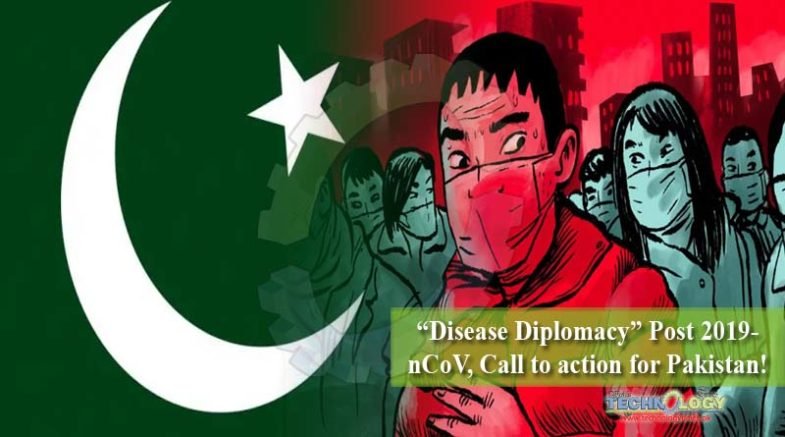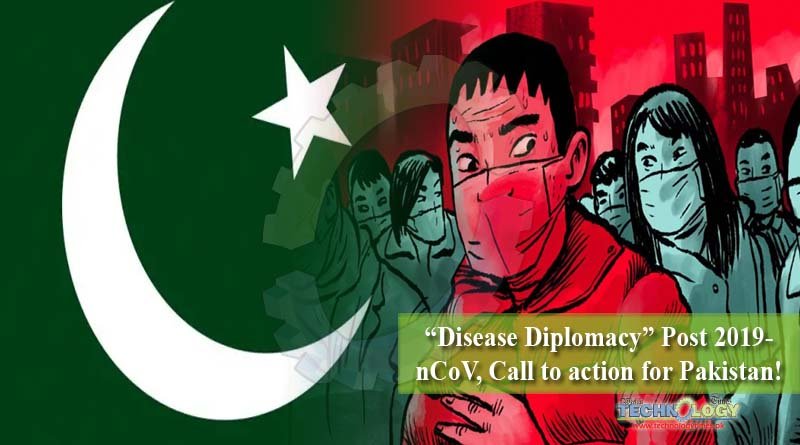Author: Mirza Abdul Aleem Baig
After decade of neglect, infectious diseases (IDs) have re-emerged as a field of inquiry in the area of international public health and international health security. Gradually, the world is realizing the threat of emerging IDs after the 2019-nCoV outbreak in China.
 However, human history is abundant with stories of epidemic infections. Epidemiologically, IDs tend to follow a cyclical pattern, since they often produce immunity in survivors, and microbes await a new generation of hosts to infect. On the other hand, the disease-causing viruses or microorganisms migrate to geographically distant and immunologically vulnerable inhabitants, producing a pandemic, or regional and global outbreak.
However, human history is abundant with stories of epidemic infections. Epidemiologically, IDs tend to follow a cyclical pattern, since they often produce immunity in survivors, and microbes await a new generation of hosts to infect. On the other hand, the disease-causing viruses or microorganisms migrate to geographically distant and immunologically vulnerable inhabitants, producing a pandemic, or regional and global outbreak.
The historical relationship between the humanity and IDs is fascinating and noteworthy. IDs plagued civilizations long before the development of territorial states during the European Renaissance. Subsequently, epidemic diseases shaped human history, generally, and military conflict, in particular. During the Peloponnesian Wars, disease demoralized the Athenian people, weakened the army, and undermined the political leadership.
Subsequently, more than 2,500 years later, the 1918 influenza epidemic killed 25 million people, including 500,000 Americans. The Spanish flu struck 294,000 allied troops in the fall of 1918. By the time Spanish flu, the pandemic had infected more than a quarter of the world’s population. Moreover, the 1918 flu pandemic killed 50-100 million, which is more than the combined total casualties of World War I and II.
Until the early twentieth century, plague, smallpox, influenza, and other scourges decimated human populations around the world. Despite exceptional improvement in pandemic control, IDs remain a major threat to global public health. In 1998, 13.3 of the 53.9 million deaths worldwide, or 25 percent of all death, resulted from IDs. Historically, some major disease outbreaks in China, including the 1957 Asian flu, the 1968 Hong Kong flu, and the 2002/03 SARS (Severe Acute Respiratory Syndrome) epidemic, have triggered epidemics elsewhere in the world, killed approximately 800 people around the world.
In total, SARS infected more than 8,000 people in 26 countries. As demonstrated in the SARS epidemic, the new strain of coronavirus (2019-nCoV), which causes a type of pneumonia that has not previously been identified in humans, resulting spillover of disease outbreaks in China and around the world.
The 2019-nCoV coronavirus outbreak, also known as the Chinese pneumonia outbreak or the Wuhan coronavirus, is a viral outbreak that was initially identified during mid-December 2019. Chinese authorities identified the new coronavirus has resulted approximately 3000 confirmed cases in 17 provincial-level regions in country, and additional cases being identified in a growing number of countries internationally. On January 21, and 25, 2020, the first cases in the United States and Canada were also announced, respectively. Confirmed cases have also been reported in 11 countries, including, Japan, Thailand, South Korea, Nepal, Malaysia and Singapore.
As of January 27, 2020, around 80 deaths have occurred all in China and 92 patients were also recovered. Conversely, ID threats, and the fear and panic that may accompany them, leads to various economic and social risks. With respect to outbreaks and epidemics, there are obvious costs to the health system in terms of medical treatment and outbreak control. ID outbreaks pose additional social risks beyond economic threats. IDs outbreaks have the potential to induce geopolitical instability. Thus 2019-nCoV may not only have serious implications on stability, prosperity, and health security at the regional, but also global level.
The fact about ID outbreaks have more reach in our increasingly globalized world. In the age of globalized trade and air travel, diseases that once took months or even years to spread beyond their regions of origin can now migrate or travel around the globe in a matter of hours. With growing concerns about such IDs, “Disease Diplomacy” has emerged as a key foreign and health security policy concern.
The term relates in particular to IDs issues and determinants that cross national boundaries. As the 21st century continues to emphasize the need for synchronized health actions between nations, the significance of disease diplomacy should be an important component within the foreign policy of Pakistan. Pakistan’s location at the cusp of Central Asia and South Asia makes it ideally suited for inter-regional connections. Moreover, geostrategic location makes Pakistan a nexus for the Eurasian Silk Road Economic Belt, and Southeast Asian Maritime Road.
Apparently, relationship between Pakistan and China may further cemented into higher level of strategic partnership with a unified vision of shared future for the regional peace, progress and stability, if both countries will have bilateral health treaties and agreements. With particular emphasis on health system development, regional and international public health, infectious disease detection and control, and international health security.
Similarly, after the 2019-nCoV outbreak, Pakistan is also at high risk of epidemics due to communicable diseases because of poor socioeconomic conditions, low health awareness, inadequate sanitation, unsafe drinking-water, and overcrowded cities. In Pakistan, as a matter of fact, due to socioeconomic, environmental, corruption and bad health governance, communicable diseases still remain a major public health concern and prime cause of morbidity and mortality. Pakistan also bears a significant portion of the regional burden of many communicable diseases that pose a significant threat to regional and international health security.
The recent 2019-nCoV outbreak necessitate the regional collaboration is of paramount importance. Many diseases with epidemic potential may be transmitted rapidly, within and across both countries. The effectiveness of future policies to deal with IDs in the region will only be assured if policies are based on evidence. In Pakistan, there is a great desire to know what the future of IDs will bring, and also to know how we should behave in the future. Now is the high time to realize that we are in darkness than to pretend that we can see the light. Nevertheless, the following recommendations are put forwarded for CPEC Authority, primarily, Government of Pakistan (GoP), health and foreign policy planners, principally.
- Integrate a health and infectious diseases perspective into traditional foreign policy and create information platform for disease diplomacy.
- Establish the coordinating office for disease diplomacy to highlight the connection between health, well-being and socioeconomic development.
- Harmonize general foreign policy to highlight the health issues for diplomacy, and utilize the disease diplomacy for regional and international health security.
- Utilize science and technology, and health personnel in diplomatic activities/missions and produce policy papers on subjects arising in disease diplomacy and strengthen diplomatic proficiency,
- Government must get its own house in order, continue its efforts to strengthen good governance with emphasis on merit-based institutional development and rule of law.
- And, exhibit good moral character; exceptionally give priority to fight against nepotism and corruption throughout not only CPEC development but also, society as-a-whole. Eventually, CPEC Authority must be chaired by an honorable civilian (maybe economist) rather than retired military general. However, a separate security domain may be constitute under CPEC Authority that may be headed by military general.
